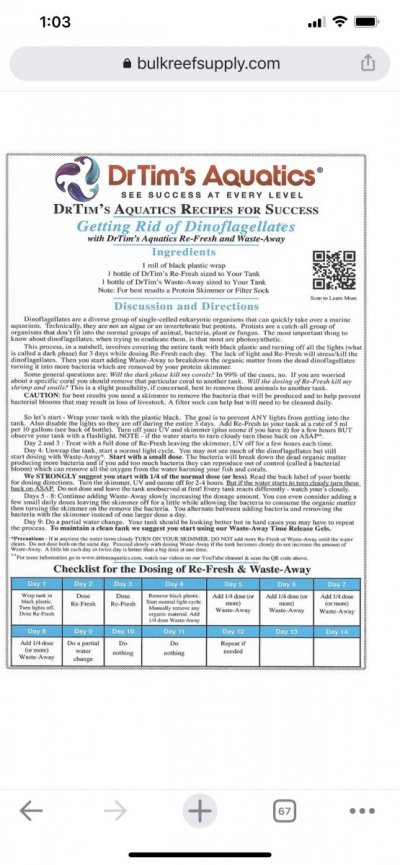I am starting to get what I'm almost positive is some kind of Dino in my tank, I don't have a microscope so I can't identify what kind. It hasn't became a big issue it's basically just strings of it on my back glass, but I'm wanting to deal with it before it does become a problem. If my memory is correct (which it may not be) Dinos usually start when the nutrients (nitrate and/or phosphate) are at zero. Several articles I've just read say it is excessive nutrients that lead to dinos.
So to fight off dinos am I trying to reduce or increase nutrients?
Currently my tank is at 2ppm nitrate and .05ppm phosphate.
So to fight off dinos am I trying to reduce or increase nutrients?
Currently my tank is at 2ppm nitrate and .05ppm phosphate.














